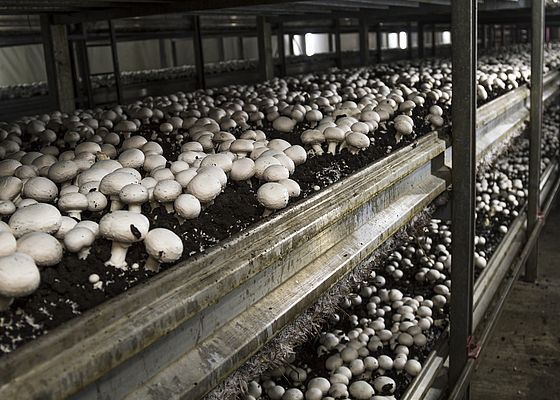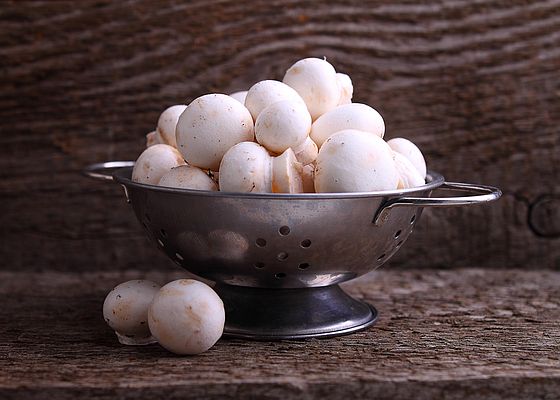Based in Tullow, Co. Carlow in Ireland, and owned and run by the Codd family, Codd Mushrooms is Ireland’s most progressive mushroom farmer, with a firm focus on quality and sustainability. The company was started in 1989 and has developed into one of the largest seller of mushrooms to the Irish marketplace.
The company strives to supply the finest quality mushrooms, with a production and packing facility that is regarded as one of the most modern in Europe, and a vacuum cooling system that takes products from a field temperature of 20°C down to 3°C in just 20 minutes. This important cooling process ensures an extra two days of shelf life on all of Codd Mushroom’s products.
Even though the company embraces technology, it also has a commitment to sustainability, and strives to be the most environmentally friendly mushroom farm in the world. This has seen the company take advantage of renewable energy generation sources, but it is always looking at where further energy savings could be made.
At the same time, as the company has grown and built new production facilities, it has maintained a clear focus on the benefits of automation, as director Raymond Codd explains: “Through progressive automation, we have been able to advance our production as the business has grown.”
Energy savings potential
In line with this philosophy, Codd Mushrooms was keen to investigate whether energy savings could be made in the factory chilled water system, and whether reliability could be increased. The chilled water system addresses the different requirements of the various production areas. These production areas all work independently, and need varying amounts of heating or cooling depending on the environmental conditions and the point in the production cycle.
Water is cooled within an industrial chiller and then held at 5°C in an insulated buffer tank. In operation, chilled water is pumped from this buffer tank through the factory, and as the production areas take that chilled water through their heat exchangers, it is returned into the return-line warmer, where it mixes with water from other rooms as well as with water which was not used at all. The water is then returned to the buffer tank considerably warmer than when it left. The returned water mixes with the cold water in the buffer tank and warms it up, so the chiller increases its cooling capacity to bring the temperature back down to 5°C.
To investigate the possibilities for energy savings in the system, Codd Mushrooms called in local Mitsubishi Electric system integrator MPAC. Director Matt Pender says: “Because the system didn’t have any way of knowing what the demand would be, it was always working at full capacity. As such, it was only ever working efficiently when demand was equal to 100% of capacity.”
“In reality, demand at the plant is dynamic. It rarely needs the full capacity, and even if it does it still won’t be a constant demand. The system demand varies hour by hour and day by day, with a number of different influencing factors, including the number of production rooms calling for cooling, the stage of the cycle the rooms are in, the external ambient temperature dictated by the local weather and the humidity.”
Even at zero demand, the system would continue pumping the maximum volume of water through the factory. Although it wouldn’t be drawn through the heat exchangers, once it left the insulated buffer tank it would still begin to warm up due to the ambient conditions. The result is that the water returning to the buffer tank would be warmer than when it left, and so, the chiller would have to work to cool water which has done no work for the factory whatsoever.
Thorough investigation
MPAC performed a thorough investigation of the chilled water system, looking at its inefficiencies and areas for possible improvement, and noting that it consumed 6115kWh of energy over a seven day monitoring period.
Although a theoretical maximum efficiency could be achieved by stopping the system when there was no demand, this would lose the ability to detect when demand increased again. “Furthermore,” says Pender, “if we didn’t keep some sort of buffer of chilled water, we would have a very ‘laggy’ system that was slow to respond when a given production area called for cooling.”
The solution developed by MPAC lay in between, with a calculated demand system. The various pumps in the system – including the primary pump that circulates water between the industrial chiller and the insulated buffer tank, the secondary pump feeding the lower side of the factory, and the twinset pump feeding the upper side of the factory – were all put under the control of Mitsubishi Electric FR-F740 variable speed drives. These were linked to a Mitsubishi Electric MELSEC Q series PLC via CC-Link.
“We have worked closely with Mitsubishi Electric for many years, and have absolute confidence in the performance and reliability of the products,” says Pender.
All process variables of pressure and temperature are measured by sensors, and all analogue and digital data is fed to the Q series PLC via Mitsubishi Electric STLite remote I/O unit. The PLC calculates the actual demand and calculates the appropriate response to meet the demand, sending control signals to the variable speed drives.
By offering precise and appropriate control of the pumps, the volume of water moving through the primary and secondary circuits is always proportional to demand. Operator interaction and plant process visualisation is accomplished through a Mitsubishi Electric GOT series HMI.


























































